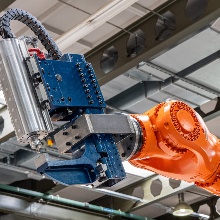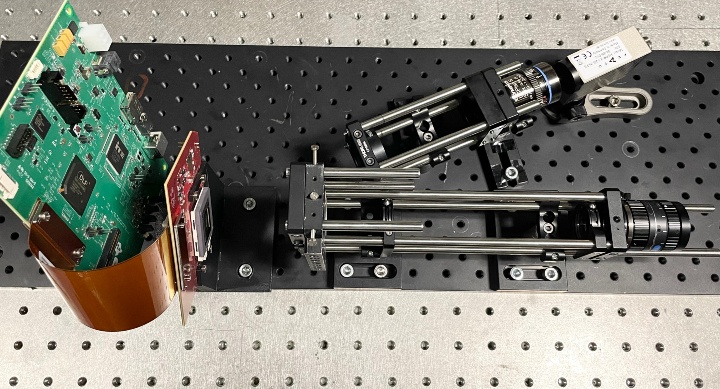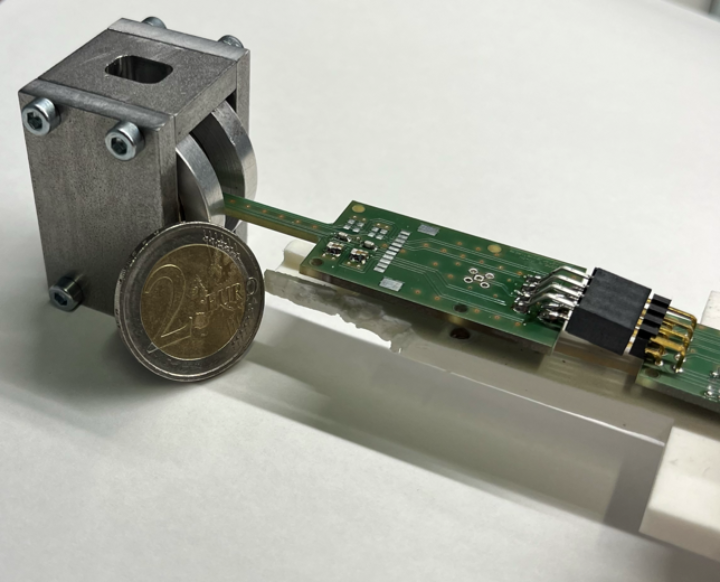"The University of Stuttgart researches intelligent systems for a sustainable society and passes on findings and technologies to business, science and society. We are excited to showcase excerpts of our diverse research at Hannover Messe 2024, aligning with this year's theme 'Energizing a sustainable industry,' and to engage in discussions with both familiar and new partners," emphasizes Prof. Wolfram Ressel, Rector at the University of Stuttgart. The university will participate as a co-exhibitor at the joint stand of the state of Baden-Württemberg (Hall 15, Stand A06) and other stands. Visitors from around the world attending the trade fair will gain insights into the cutting-edge research being conducted at the University of Stuttgart.
The following exhibits, projects, and facilities from the University of Stuttgart will be showcased at the Hannover Messe in Hall 15, Stand A06:
Materials Testing Institute: Welding gun for lightweight construction
Joining technology for e-mobility: At the Hannover Messe, the Materials Testing Institute (MPA) at the University of Stuttgart will be exhibiting a robot-guided welding gun developed in-house for friction stir welding, which joins components for the automotive industry. The welding gun meets the requirements for a wide range of applications in car body construction. Various application scenarios for the new joining gun will be demonstrated in Hanover on the rear section of a Mercedes EQS body. Friction stir welding has particular advantages when joining high-strength aluminum alloys, for multi-sheet joints and when joining aluminum and steel sheets.
The MPA, the Institute for Entrepreneurship (ENI) and the Institute for Control Engineering of Machine Tools and Manufacturing Units (ISW) are working together in a VIP+ project funded by the Federal Ministry of Education and Research (BMBF) to further develop the welding gun with regard to industrial requirements such as cycle times, accessibility and join strength. The aim is to increase the technology readiness level (TRL) to such an extent that it can potentially be used in car body construction. The planned validation of the robot-guided welding gun will also benefit from a comprehensive project support committee comprising original equipment manufacturers (OEMs), suppliers, and automation experts.
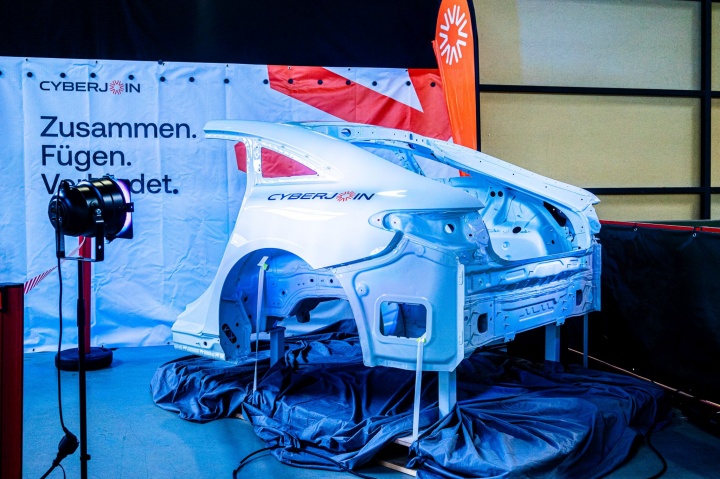
Transformations-Hub CyberJoin: Know-how for the automotive industry on the road to e-mobility
The CyberJoin [de] transformation hub, coordinated by the MPA at the University of Stuttgart and the Gesellschaft für Schweißtechnik international and funded by the Federal Ministry for Economic Affairs and Climate Action (BMWK), supports car manufacturers and suppliers of components for bodywork, chassis and e-machines on the path to e-mobility. These are facing major challenges due to drive electrification, the integration of alternative drive technologies, the sustainable reduction of overall resource consumption and lightweight construction. While many components of a car with a combustion engine are no longer needed in an electric vehicle, components made of aluminum alloys require different joining and production technology.
This is where CyberJoin comes in: Through free two-day knowledge transfer sessions and one-day workshops, speakers share expertise on joining techniques, materials, and production technology in e-mobility specifically for employees from small and medium-sized companies in the automotive industry. At the Hannover Messe, the CyberJoin team will showcase ongoing development projects, share information about its services, and be available for discussions and networking.
TGSPCam: A view through the fog
The future of autonomous mobility hinges on how vehicles navigate diverse environments and varying conditions. This is achieved by using various optical sensors. Naturally, challenging visibility conditions such as fog, snowfall, and dust pose significant challenges.
The Time Gated Single Pixel Camera (TGSPCam) is a novel approach that combines the advantages of the LiDAR principle with an imaging method, thereby allowing disruptive environmental influences to be greatly reduced. At the same time, this provides a high degree of flexibility in data evaluation. This is achieved by using modern, ultra-fast digital measurement technology and rapid light structuring.
At the University of Stuttgart's booth, a demonstrator will showcase the implementation of this principle using currently available technology for the first time. The work is being carried out at the Institute of Applied Optics (ITO) at the University of Stuttgart as part of the Innovation Campus Mobility of the Future (ICM), a cooperation between the University of Stuttgart and the Karlsruhe Institute of Technology (KIT).
KSat: Student space projects from ISS experiments to small satellites
Practical work in space travel alongside your studies: This is the motto of the student small satellite student society at the University of Stuttgart (KSat e.V.) [de]. Its more than 200 members are involved in space projects ranging from its own sounding balloon, which ascends from Stuttgart several times a year to altitudes of up to 38 kilometers, to test payloads from universities and companies, to self-developed experiments on sounding rockets and the International Space Station (ISS), to the development and construction of its own small satellite.
At the Hannover Messe, KSat will be showcasing two ISS experiments that were tested on the ISS in 2023 and 2018 before returning to Earth and Stuttgart on board a Dragon capsule. A model of the small satellite SOURCE, also known as "the sätellite", is also on display. This 3U+ Cubesat is being developed with the support of the Institute of Space Systems (IRS) at the University of Stuttgart. In addition to educating the student team, its main goal is to study its own behavior during re-entry. It is also equipped with several payloads, such as innovative thin-film solar cells, a sandwich structure (DLR), smart heaters (Airbus) and a COTS camera used as a star tracker.
QSens: Quantum sensors up-close
Quantum technology is a nascent field of research that merges the fundamental principles of quantum mechanics with practical engineering applications. The field of quantum sensor technology in particular offers very high potential to produce the first industry-relevant applications in the coming years. Quantum sensors typically exhibit exceptional inherent specificity and can achieve detection thresholds at the boundary of what is theoretically possible. This makes quantum sensors ideal candidates for meeting the constantly growing demand for high-precision sensor technology in both the industrial and consumer sectors.
As part of the BMBF-funded future cluster "QSens - Quantum Sensors of the Future", the universities of Stuttgart and Ulm are conducting research into the industrial use of quantum sensor technology together with three non-university research institutions and 18 industrial partners. These research activities have resulted in the first portable quantum sensors based on the measurement of nuclear and electron spins. These will be showcased at the University of Stuttgart's booth at the Hannover Messe, inviting visitors to experience them firsthand. These products will be showcased at the University of Stuttgart's stand at the Hannover Messe, inviting visitors to test them firsthand. In the future, the fields of personalized medicine, pharmacy and environmental analysis will also benefit greatly from quantum sensors.
TRACES: Promoting cooperation, supporting research and knowledge transfer
The Transfer Center (TRACES) is the University of Stuttgart's central point of contact for knowledge transfer and provides comprehensive support for students, doctoral researchers, employees and alumni in their transfer projects. The center serves as a hub for transfer activities, offering services for research initiatives focused on knowledge transfer. It also initiates and fosters partnerships and collaborations between the university and external stakeholders, supporting co-creative research and knowledge exchange. It fosters the integration of entrepreneurship within the University of Stuttgart and serves as a networking partner for those involved in start-ups at the university and in business, society, politics, and administration.
TRACES will be showcasing two of its departments at the Hannover Messe:
Business relations - Science meets business: This department will share information at the trade fair about the University of Stuttgart's key topics and research fields and will also establish contacts with experts for potential future research and transfer projects.
It is basically responsible for coordinating inquiries, identifying requirements, networking and cooperation between the University of Stuttgart and business, politics and society in the field of research and transfer. It facilitates the search for collaboration partners, offers scientific expertise, and emphasizes the development of sustainable and strategic partnerships.
Career Service – This is an interface between studying at university and your future career: This is the competence center for your future profession, career and recruiting and supports students and graduates in career orientation, job search, application, job interviews and career planning. Another key focus is on building networks with industry, including fostering practical contacts and relationships.
Diverse cooperations
The University of Stuttgart is participating in collaborative projects at multiple stands at the Hannover Messe. For example, it is present at QuantumBW (Hall 2, Stand A02), a Baden-Württemberg state initiative for quantum technologies involving the Center for Integrated Quantum Science and Technology (IQST) of the Universities of Stuttgart and Ulm. Additionally, the university is represented at the Fraunhofer-Gesellschaft stand (Hall 2, Stand B24) with the AI Studios project from the Institute of Human Factors and Technology Management (IAT) in collaboration with Fraunhofer IAO, as well as at the THE-LÄND pavilion (Hall 12, Stand D15) with joint projects involving the ICM and Fraunhofer IPA.
Media contact
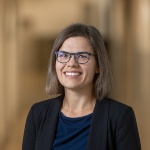
Lydia Lehmann
Deputy Head of University Communications


